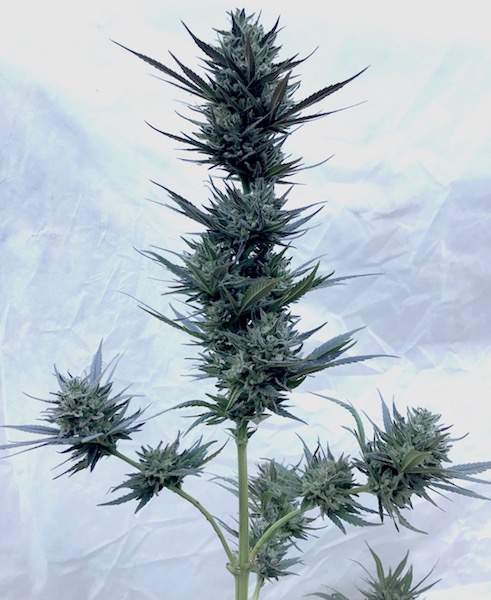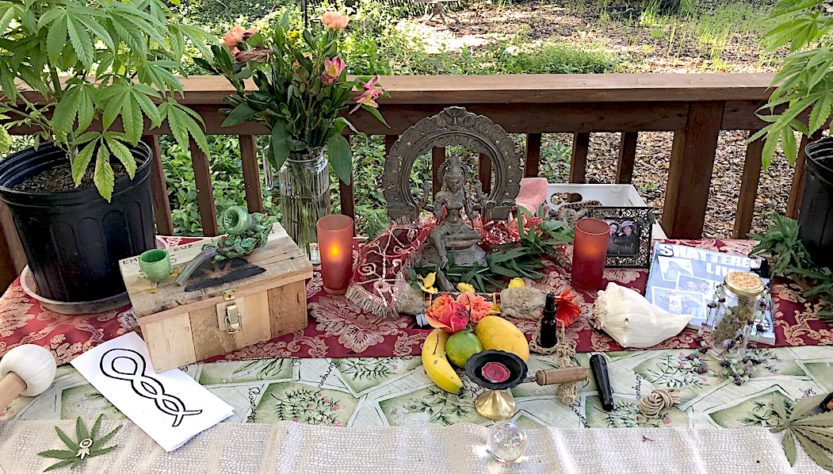The Cantheist / Cannatheist site
Cantheism, or Cannatheism, is a global religious practice and belief: Cannabis is a Sacrament in the lives of its adherents. This single practice unites the global Cantheist community.

Cantheism was first defined and founded by Chris Conrad in 1995 as Kantheism, derived from the Greek root word kannabis (κάνναβης).
Conrad soon adapted the Latin spelling, cannabis, into the forms Cantheism and Cannatheism, to be more consistent with modern spellings and understanding.
Cantheism is an ecumenical practice that does not discriminate against any individual’s core religious values or beliefs. We are connected by the holy smoke that we share.
Cantheism is based on sincere personal belief and intent. Christian, Hindu, Muslim, Jew, Atheist, Skeptic, animist, Pantheist and persons of all faiths, who receive cannabis in thanksgiving and prayer, are welcome to congregate and share sacrament.*
The ceremonial role of Cannamaste

The symbol for Cantheism is derived from the oldest known symbol for cannabis hemp, an Egyptian heiroglyph from about 3000 B.C.
There is a Cantheist Creed, linked below, that explains the underlying beliefs that explain Cantheism and should be invoked at the beginning of the circle.
Cannabis is consumed as a sacrament whether it is used individually, ceremonially or spontaneously among Cantheists. The easiest way to share the experience is to publicly indicate your intent to partake of the flowers as a spiritual practice, as described here.
The Cannamaste Circle: A Sacramental Practice. The shared cannabis is mixed into a spliff and travels the ceremony in a circle.
Light the spliff. Touch your left hand to your heart, inhale the smoke or vapor, look into the eyes of the person on your right and say the word, “Cannamaste,” [Cán-um-ahs-tay], pass the sacrament from your right hand to theirs. If they reply in turn, “Cannamaste,” it signifies that they accept cannabis as a personal sacrament, as well. This continues from person to person around the circle. Once the circle is completed, people can continue to pass the spliff without an inhalation.
Congregants continue this practice until the first sacrament is consumed and repeat it with another spliff at the end for the final sacrament. People who choose to pass on a round simply say “Cannamaste” to the person who passes to them, holds it while inhaling one deep breath, then passes it to the next person and saying “Cannamaste.”
If there are latecomers to the circle, they can continue to contribute cannabis to the mix and a final spliff is rolled from the inclusive batch. Some of the mixture is set aside for use in the next ceremonial spliff.
“Inhale and pass it on. Cannamaste. “
To find your way through the Cantheist belief system, explore these links below.
1 History and cultures of Cantheism

2 Cantheist / Cannatheist Creed
6 Cantheist Council January 2018
8 Cannabis Spirituality and Cantheism (Earthdance panel and presentatino, 2020). Session begins at 2:43:30. Cantheism at 3:08:54
“Inhale and pass it on. Cannamaste.”
* Note, due to security concerns, persons who are under age 21 currently are not allowed to participate in public Cannamaste circles without a physician’s recommendation or approval
Some cantheist congregations:
Kotahitanga Church of Cantheism Aotearoa. New Zealand
